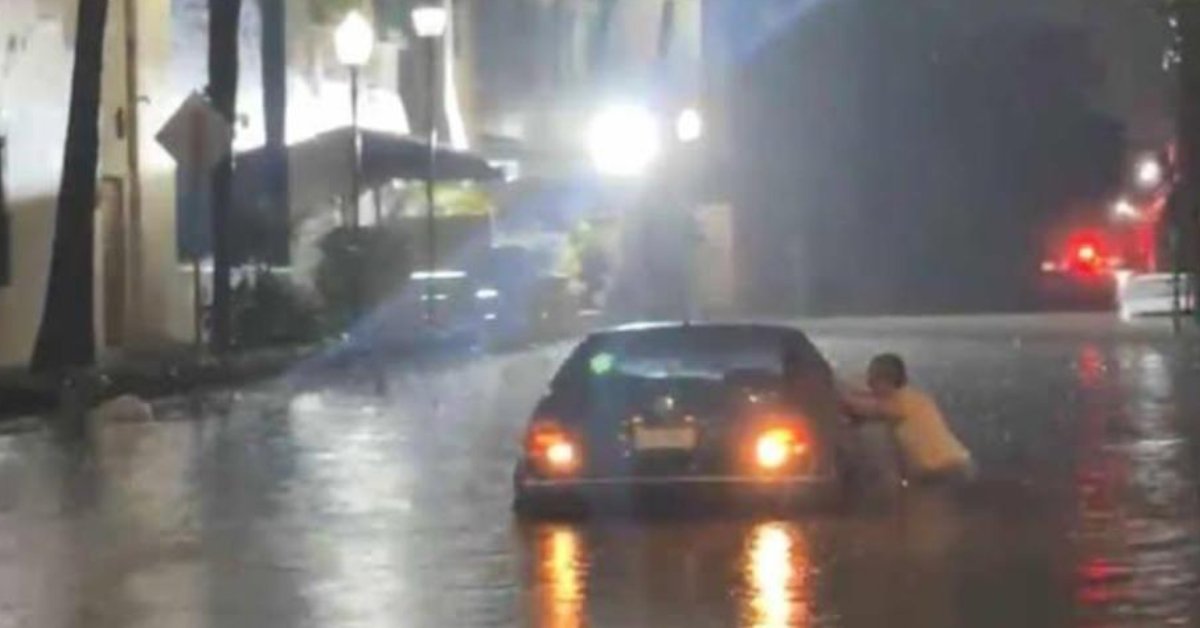Civil Protection in Puerto Vallarta shares safety tips for flooded roads to help drivers stay calm
Civil Protection in Puerto Vallarta shares safety tips for flooded roads to help drivers stay calm, assess risks correctly, and avoid accidents during heavy rains. Heavy rains this season have led to more flooded roads across the region. Civil Protection personnel warn that attempting to cross these waters in a…
Civil Protection in Puerto Vallarta shares safety tips for flooded roads to help drivers stay calm, assess risks correctly, and avoid accidents during heavy rains.
Heavy rains this season have led to more flooded roads across the region. Civil Protection personnel warn that attempting to cross these waters in a vehicle is one of the most common—and dangerous—mistakes drivers make. To help prevent accidents and save lives, the agency’s operational staff has released clear steps for anyone caught in a flood aboard their car.
According to Civil Protection, the first—and most important—action is to stay calm. Panic can lead to rushed decisions that make a bad situation worse. Drivers should take a moment to assess rising water levels and hidden currents before doing anything else. Keeping a clear head means you’re more likely to follow safety protocols correctly.
Next, if water reaches the doors or starts entering the engine compartment, turn off the engine immediately. Continuing to drive risks drawing water into the air intake and causing a total engine blackout. A sudden stall in the middle of a flooded road can leave you stranded in deeper water, where currents are stronger and hidden obstacles more common.
Safety tips for flooded roads
- Keep hazard lights on. Use your vehicle’s flashing lights to signal rescuers and other motorists that you’re in trouble. Visibility is low during torrential downpours, so any extra warning can help.
- Assess water depth. If water reaches halfway up your tires, it’s time to think about exiting. Once it climbs to the hood—or if you can’t see what lies beneath—the risk of being swept away rises significantly.
- Wait for help if current is strong. A rushing flood can knock you off your feet in seconds. If you’re unsure, stay inside and keep alert for rescue crews rather than fighting powerful currents.
- Exit through a window. Doors can jam under water pressure. Roll down or break a window to climb out safely. Only leave the vehicle if conditions allow a clear path to higher ground.
- Call 911 without delay. Report your exact location, keeping your phone elevated to prevent water damage. If you have a bright cloth or can continue flashing lights, use them to draw attention.
- Don’t return for belongings. Once you’re out, don’t risk going back for items. Your safety is far more important than any personal effects.
Beyond these steps, Civil Protection urges drivers to avoid travelling on routes with flood warnings or a known history of water accumulation. Before setting out, check official weather updates and plan alternative paths. Having a map app ready on your phone—and a full battery—can make the difference if roads close unexpectedly.
Civil Protection reminds everyone that the best way to survive a flood is to stay off flooded streets in the first place. Heed storm alerts, respect road closures, and give local responders room to work. By following these safety tips for flooded roads, drivers can reduce risks and help emergency teams focus on the most urgent rescues.
flood safety, Civil Protection, driver safety, heavy rains, flooded roads


